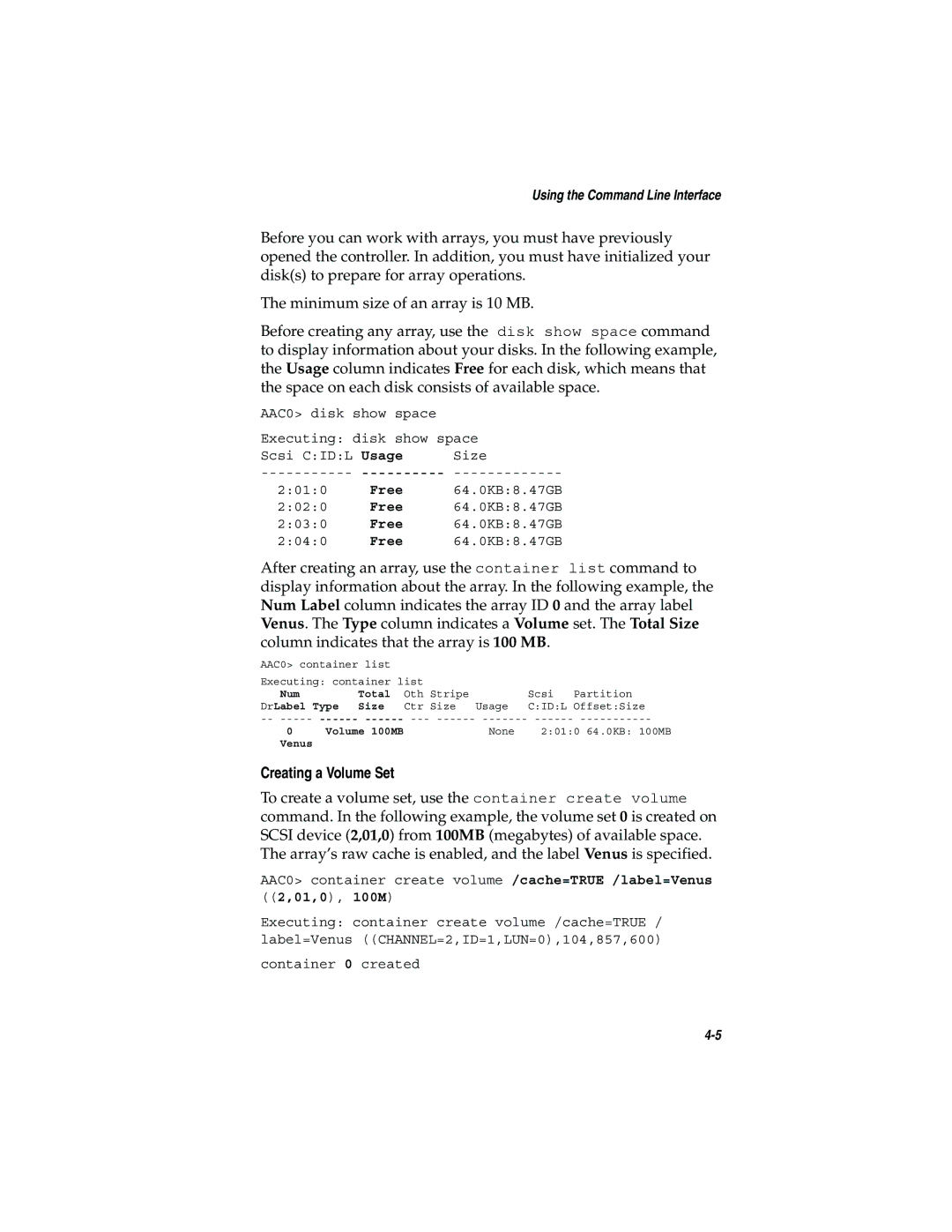Using the Command Line Interface
Before you can work with arrays, you must have previously opened the controller. In addition, you must have initialized your disk(s) to prepare for array operations.
The minimum size of an array is 10 MB.
Before creating any array, use the disk show space command to display information about your disks. In the following example, the Usage column indicates Free for each disk, which means that the space on each disk consists of available space.
AAC0> disk show space
Executing: disk show space
Scsi C:ID:L Usage | Size | |
2:01:0 | Free | 64.0KB:8.47GB |
2:02:0 | Free | 64.0KB:8.47GB |
2:03:0 | Free | 64.0KB:8.47GB |
2:04:0 | Free | 64.0KB:8.47GB |
After creating an array, use the container list command to display information about the array. In the following example, the Num Label column indicates the array ID 0 and the array label Venus. The Type column indicates a Volume set. The Total Size column indicates that the array is 100 MB.
AAC0> container list |
|
|
|
| |
Executing: container list |
|
|
| ||
Num | Total | Oth | Stripe | Scsi | Partition |
DrLabel Type | Size | Ctr | Size Usage | C:ID:L | Offset:Size |
0 | Volume 100MB | None | 2:01:0 64.0KB: 100MB |
Venus |
|
|
|
Creating a Volume Set
To create a volume set, use the container create volume command. In the following example, the volume set 0 is created on SCSI device (2,01,0) from 100MB (megabytes) of available space. The array’s raw cache is enabled, and the label Venus is specified.
AAC0> container create volume /cache=TRUE /label=Venus ((2,01,0), 100M)
Executing: container create volume /cache=TRUE / label=Venus ((CHANNEL=2,ID=1,LUN=0),104,857,600)
container 0 created
